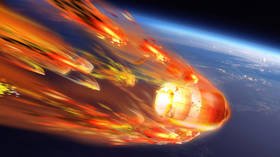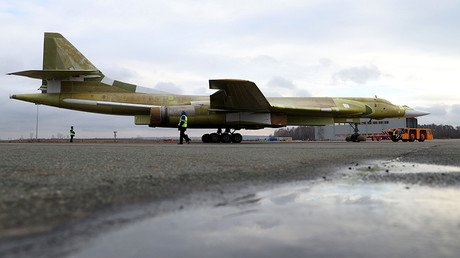Scientists MELT satellite in plasma wind tunnel to study space debris destruction (VIDEO)

European Space Agency researchers melted one of the densest parts of an Earth-orbiting satellites into vapor as part of their quest to find better methods of protecting people from falling space debris.
The team recreated the intense conditions objects face when entering Earth’s atmosphere, by placing the satellite into a hypersonic plasma wind tunnel at the German Aerospace Center in Cologne.
The scientists explained that, in theory, space hardware should burn up entirely while plunging through Earth’s atmosphere. However, in practice, that’s not always the case and some pieces remain intact enough to do “serious damage” on Earth.
The test subject, known as a magnetotorquer, is one of the satellite components that may resist burning up completely as it contains carbon fiber, polymer composite, copper coils and iron-cobalt center. It was exposed to “several thousands of degrees celsius” until it “reached a complete demise”.
While the experiment was pretty cool to look at, it didn’t pan out exactly as researchers had intended. “We have noted some similarities but also some discrepancies with the prediction models,” explained ESA clean space engineer Tiago Soares.
Also on rt.com Long night? Space junk could make dark sky a reality, scientists warnModern space debris regulations mean uncontrolled reentries should have a less than 1 in 10,000 chance of injuring anyone on the ground. Although with more space junk than ever floating about in Earth’s orbit, efforts to tidy up the universe mean more metal leftovers could soon be heading our way.
Think your friends would be interested? Share this story!














